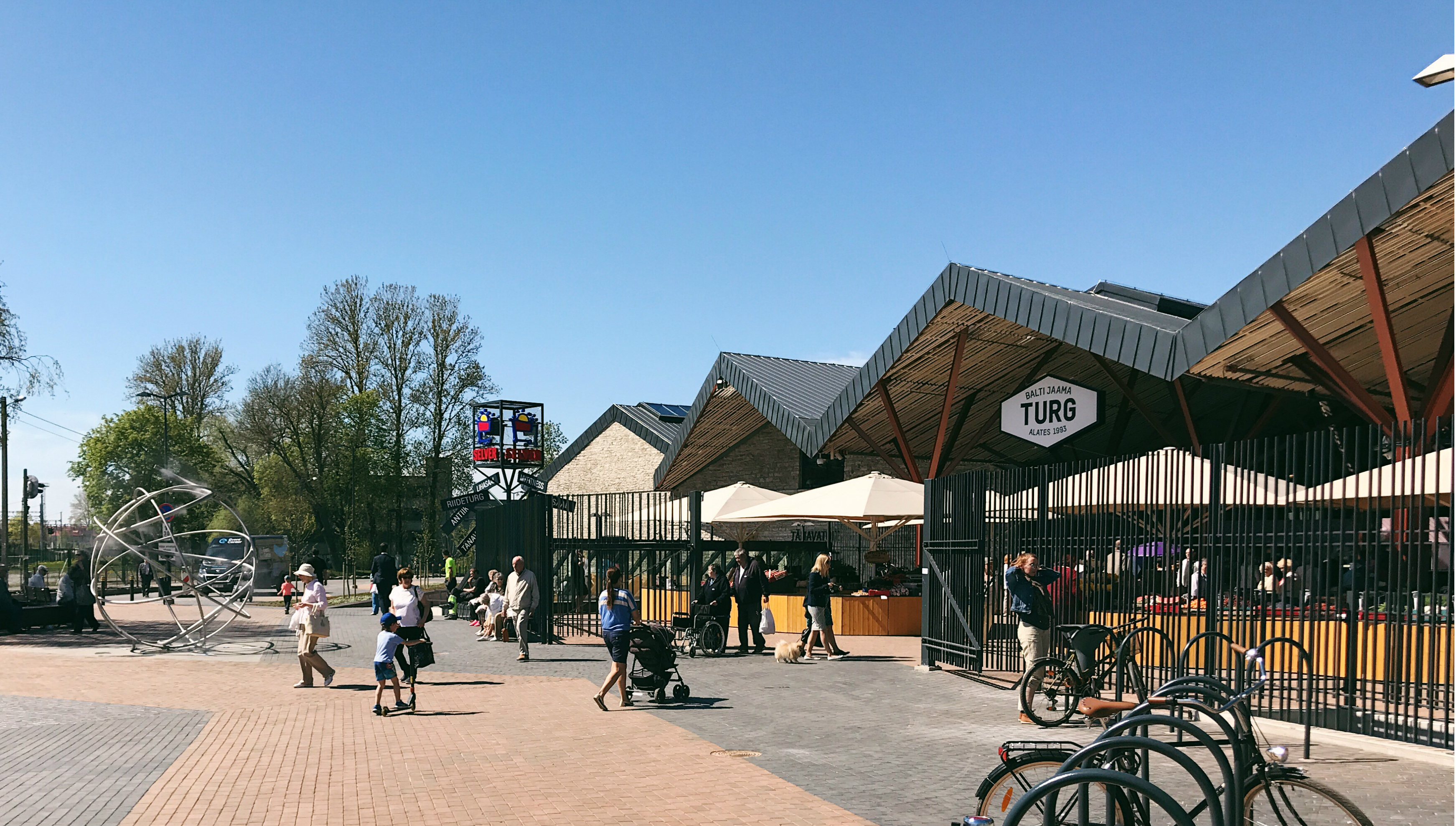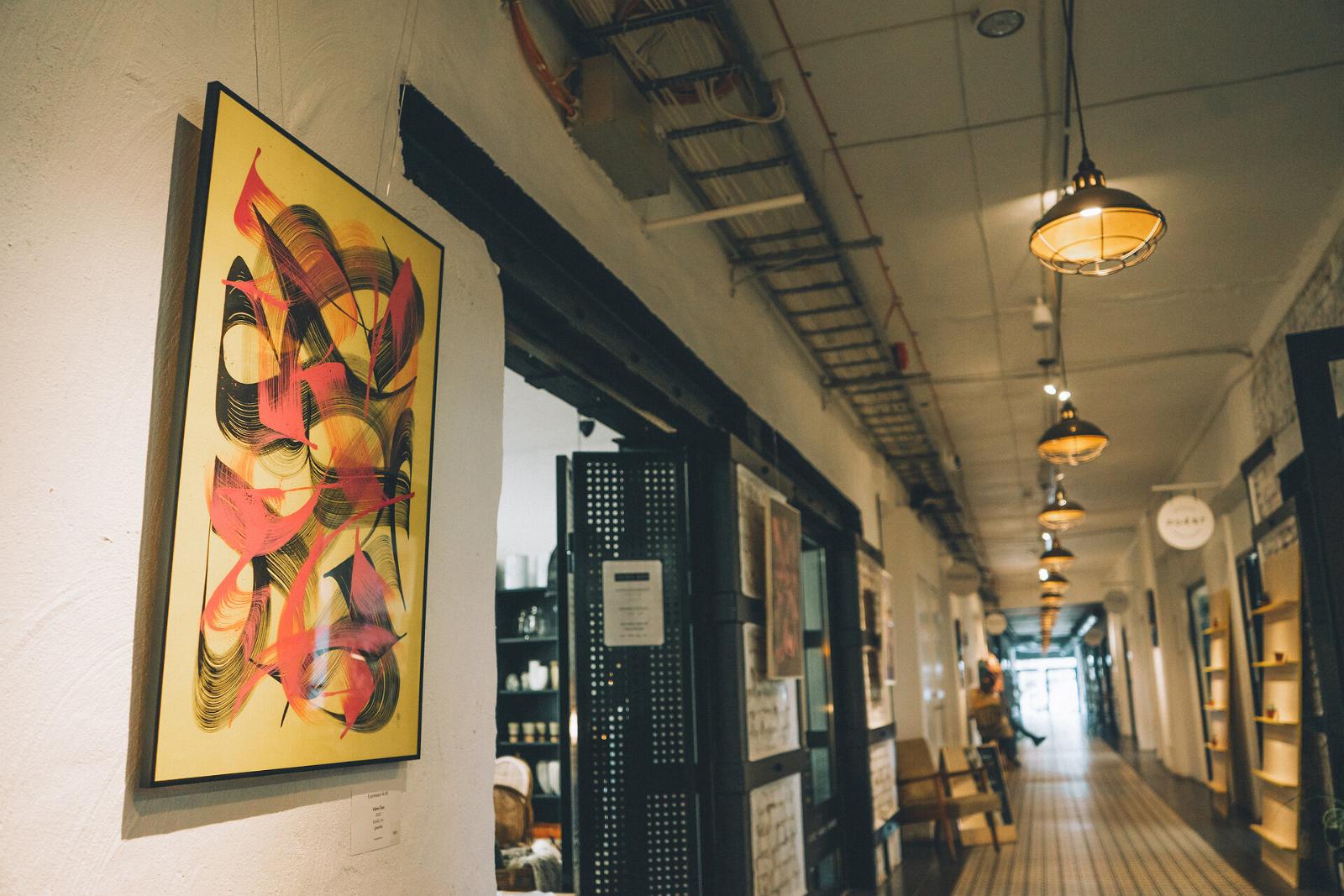
loaded:/images/placeholder.png

loaded:/images/placeholder.png

loaded:/images/placeholder.png

loaded:/images/placeholder.png

loaded:/images/placeholder.png

Photo: Rasmus Jurkatam
Telliskivi and Balti Jaama Market Area – Food, Leisure, and Culture
The Telliskivi and Balti Jaama Market area can be confidently considered one of the trendiest in Tallinn.
Telliskivi Creative City is a cultural hub located in a former factory complex, with a heart that beats in a comfortably bohemian rhythm. Between the Creative City and the popular Balti Jaama Market lie the Telliskivi quarter and Depoo Market.
This robust and expressive area is loved by both locals and their guests, offering much to do, from enjoying good food and drink to shopping, relaxing, and experiencing culture.
The many flavors of Telliskivi
Back in the day, the buildings of the Telliskivi factory were known by letters rather than addresses. In the old foundry hall, there’s now a restaurant called F-hoone. The oldest dining spot in the Creative City, F-hoone’s menu consists of breakfasts, soups, salads, and main courses—not to forget a wide selection of drinks.
Kivi Paber Käärid (Rock Paper Scissors) caters to your stomach with a completely gluten-free menu. In contrast, Nihe is a lovely vegan café offering pastries, daily specials, all-day brunch, and heartier vegetarian dishes.
Lendav Taldrik is an Asian restaurant focusing primarily on Indian cuisine. Frenchy, on the other hand, highlights French wine and food culture. Bueno Gourmet, a Chilean-Estonian street food truck in the courtyard, offers warm sandwiches influenced by Latin American flavors.

Coffee lovers are pampered at Fika, a café with Swedish influences (its name means “coffee break” in Swedish). Every year, the ice cream factory La Muu produces 100 tons of ice cream in Telliskivi, and you can enjoy its flavours in their factory’s own ice cream bar. Their selection includes specialty flavours, sorbets, and vegan ice cream.
Several other restaurants, cafés, and bars are also located near Telliskivi Creative City. For instance, Depoo food street is worth exploring, offering everything from shashlik to sushi, and at Café Margot, you can enjoy pancakes and waffles. In an old train car and its surrounding summer terrace, Peatus serves hamburgers, pizzas, and snacks that pair well with a wide drink menu.
Nearby, visitors can also discover the beverage store SIP, which focuses on Estonian beers and wines, the award-winning Estonian gin distillery Junimperium, and the cocktail bar Metsis, among other trendy drink spots and places for a pleasant time.
Closer to the railway station is the Telliskivi Quarter, a new business hub. Here you’ll find an interesting spot called Literaat, where books, coffee, and food intersect. In this oasis, Rahva Raamat bookstore, a cosy café, and a restaurant offering fine food and wine operate side by side.
The delightful Balti Jaama Market
In 2017, Balti Jaama Market underwent a complete renovation, transforming an old outdoor market into a modern place for fresh food and joyful gatherings.
In the covered outdoor market, vendors offer the best seasonal produce, from wild garlic to berries, potatoes, and mushrooms.

The small kiosks in the outdoor market are home to many businesses, from cafés to shops selling nuts and spices, as well as services like key-cutting and cobbling. A light snack can be enjoyed at the vegan café Veg B12, Anneli Viik’s chocolate café, or Café Cape Town, which offers South African-style pies.
The ground floor of the market hall is dedicated to food experiences. Street food stalls serve wraps, kebabs, and bao buns, with tables and bar stools nearby for a comfortable rest. Burger fans can enjoy food at VLND Burger, a burger chain originating from the town of from Viljandi, or vegan burgers from VegMachine. For a taste of Japan, Tokumaru is the place to go. And for dessert, Ristikheina Café offers wonderful slices of cake.
Also on the ground floor is a colourful fruit and vegetable street, bakeries, cheese shops, and specialty stores featuring flavours from Italy and Spain. At the far end of the floor is a meat hall, while the fish market is accessible through the courtyard.
The basement level of Balti Jaama Market houses a supermarket and a fitness club, while the second floor sells clothing, toys, and antiques. There’s also a beer restaurant called Humalakoda on the second floor.
A heaven for sustainable shoppers
There are even more shopping options in the small stores of Telliskivi Creative City, many of which focus on local design, and it’s not uncommon to meet the shop owners themselves.
Tali is a design shop featuring clothing and home decor from both Estonian and international designers.
Fashion lovers are excited by several stores selling design clothing and accessories. One of the most famous is Reet Aus, which promotes sustainable reuse. Stella Soomlais is renowned for her sustainable leather bags and accessories. The clothing store Mia & Leela can craft a custom-made coat in just a few weeks, and for a plunge into a colourful retro world, visit the vintage clothing shop Kopli Couture.

The ethical codes of the stores in the Creative City must align with those of the centre itself. A great example is Ilma Pood, where ecological products are packaged in paper bags or the customer’s own containers. Snacks, dry goods, spices, tea, and coffee are sold by weight, and the shop also offers eco-friendly laundry and cleaning supplies, as well as reusable hygiene products.
Cultural highlights
The crown jewel of Telliskivi Creative City is the international photography art centre, Fotografiska Tallinn, whose frequently changing exhibitions showcase the best works of the world’s top photographers.
Fotografiska also has a café and restaurant, both accessible without a museum ticket. The restaurant recognised by the Michelin guide is known for its sustainable cooking. The restaurant’s delicious dishes are made from local ingredients, used creatively down to the last scrap.

The Juhan Kuus Documentary Photo Centre focuses its exhibitions on documentary photography. Next door, the Green Hall is known as a venue for versatile art exhibitions.
You can admire art on the streets and open areas of the Creative City, where works by both Estonian and international artists are displayed. Outdoors, don’t miss the large and impressive murals and other street art.
The Club of Different Rooms (Erinevate Tubade Klubi) and Jaik are popular spaces for events ranging from cultural happenings to corporate meetings, concerts, theatre performances, and film screenings. The Independent Dance Stage (Sõltumatu Tantsu Lava) is a platform for contemporary dance art.
History and future plans
The Telliskivi and Balti Jaama areas are characterised by the railway that connected Tallinn and St. Petersburg in 1870. Tallinn’s main railway hub was located in what used to be Bishop's Paddock, now the Balti Jaam.
Just a stone’s throw away, the main railway factory began operations at the same time, employing 500 workers and tasked with maintaining the railway infrastructure and rolling stock. It was the largest industrial enterprise in Tallinn at the time.
The physical structure of Telliskivi Creative City and its surroundings stems from this background. Before World War II, the factory specialized in repairing and building locomotives and carriages. Over the decades, the factory also produced semiconductors for the Soviet Union’s first lunar rover and components for power stations, railways, the defence industry, and airports.
After Estonia regained independence, the factory was privatized and moved out of the city centre. The buildings stood vacant for a long time, but in 2009, they began to be developed in their current direction.
The area is still developing, and in the coming years, the biggest changes will occur at Depoo Market. The historic depot building will be restored, and the Soviet-era extensions will be demolished. Additionally, new office and commercial buildings will be constructed, and Balti Jaama Market will be expanded. The most passionate discussions have surrounded a landmark mushroom-shaped building that is planned. Moreover, a new hotel is planned for the area.
How to get there?
The Telliskivi and Balti Jaama areas can be reached most quickly from Tallinn’s city center by trams 1, 2, and 5. The relevant stops are Balti Jaam and Telliskivi.
Balti Jaama Market is also conveniently accessible by walking through the Old Town. Walking parallel to the railway tracks will lead you towards Telliskivi.

- 1. Restaurant F-hoone
- 2. Gluten-free restaurant Kivi Paber Käärid
- 3. Restaurant Lendav Taldrik Resto
- 4. Nihe Café
- 5. Frenchy
- 6. Café La Muu
- 7. Depoo food street
- 8. Locomotive Restaurant Peatus
- 9. Literaat shop-restaurant
- 10. Balti Jaam Market
- 11. Balti Jaam Market street food area
- 12. Anneli Viik Handmade Chocolate Café
- 13. Humalakoda Restaurant and Brewery
- 14. Fotografiska Tallinn
- 15. Fotografiska Restaurant & Rooftop Garden
- 16. Fotografiska Café
- 17. Dokfoto Centre-Gallery by Juhan Kuus
- 18. Club of Different Rooms